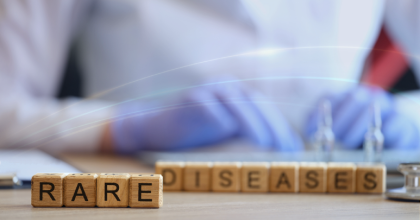Learning and Education to ADvance and Empower Rare Disease Drug Developers (LEADER 3D)
As part of the Accelerating Rare disease Cures (ARC) Program, CDER’s Rare Diseases Team (RDT) inaugurated the Learning and Education to ADvance and Empower Rare Disease Drug Developers (LEADER 3D) initiative to better understand and address the unique challenges in bringing rare disease products regulated by FDA CDER to the market. Rare disease drug development can be challenging for numerous reasons, such as small -and sometimes very small- patient populations, genotypic/phenotypic heterogeneity within a disease, and novel endpoint development and selection, all in the context of often serious and life-threatening diseases without approved therapies. These commonly faced rare disease drug development challenges can make study design, conduct, and interpretation complex. CDER recognizes the unique challenges drug developers face in demonstrating the safety and effectiveness of drugs that treat rare diseases. The goal of LEADER 3D is to develop educational content based on the needs of rare disease drug development stakeholders.
Educational Resources
Video: Challenges, Strategies, and Regulatory Considerations for the Design of Rare Disease Clinical Trials
This video is the first resource as part of the LEADER 3D effort. The video provides information about demonstrating substantial evidence of effectiveness and approaches to clinical trial designs that are informative to challenges inherent to rare disease drug development.
The following resources provide material supportive to the video content that is important for rare disease drug development:
- Demonstrating Substantial Evidence of Effectiveness With One Adequate and Well-Controlled Clinical Investigation and Confirmatory Evidence
- Demonstrating Substantial Evidence of Effectiveness for Human Drug and Biological Products
- Providing Clinical Evidence of Effectiveness for Human Drug and Biological Products
- Rare Diseases: Considerations for the Development of Drugs and Biological Products
- Rare Diseases: Natural History Studies for Drug Development
- Considerations for the Design and Conduct of Externally Controlled Trials for Drug and Biological Products
- Adaptive Design Clinical Trials for Drugs and Biologics
- Interacting with FDA on Complex Innovative Trial Design for Drugs and Biological Products
- Best Practices for Communication Between IND Sponsors and FDA Drug Development
- Formal Meetings Between the FDA and Sponsors or Applicants of PDUFA Products
- Expedited Programs for Serious Conditions-Drugs and Biologics
- Rare Diseases: Early Drug Development and the Role of Pre-IND Meetings
- Investigational New Drug Applications Prepared and Submitted by Sponsor-Investigators
- Critical Path Innovation Meetings (CPIM)
- OTP Interact Meeting (INitial Targeted Engagement for Regulatory Advice on CBER/CDER ProducTs (INTERACT))
Public Report of External Stakeholder Analysis
LEADER 3D Public Report of External Engagement Analysis
Read a summary of recommendations from the drug development community for continued efforts to expand outreach
To support the LEADER 3D effort, CDER engaged an independent contractor to collaborate with RDT (i.e., the project team) and complete an in-depth assessment and draft this public report. This report identifies educational gaps and needs to help inform the development and dissemination of educational materials specific to Rare Disease Drug Development (RDDD). The in-depth assessment completed by the project team included:
- Reviewing existing RDDD educational materials
- Conducting focus groups and stakeholder interviews
- Analyzing public docket comments to understand the perceived challenges and identify topics that would benefit from the expansion or development of educational materials and topics that require an increased awareness of FDA resources already in existence
The stakeholder interviews included members of industry (e.g., small-to-medium sized and large pharmaceutical companies, contract research organizations, and professional trade organizations), Patient Advocacy Groups (PAGs), and academia (including academics and clinicians) engaged in rare disease clinical research. This report identified stakeholder perceptions regarding RDDD challenges obtained from interviews and comments provided in a public FDA docket. The insights gathered from the report are being used to develop educational materials to address gaps in regulatory knowledge and challenges in rare disease drug development. The report informs CDER’s development of educational materials and efforts to disseminate information to relevant stakeholders.
Other Resources
- Accelerating Rare disease Cures (ARC) Program
- Guidance Documents for Rare Disease Drug Development
- Funding Opportunities
This page will be continually updated as additional content becomes available

